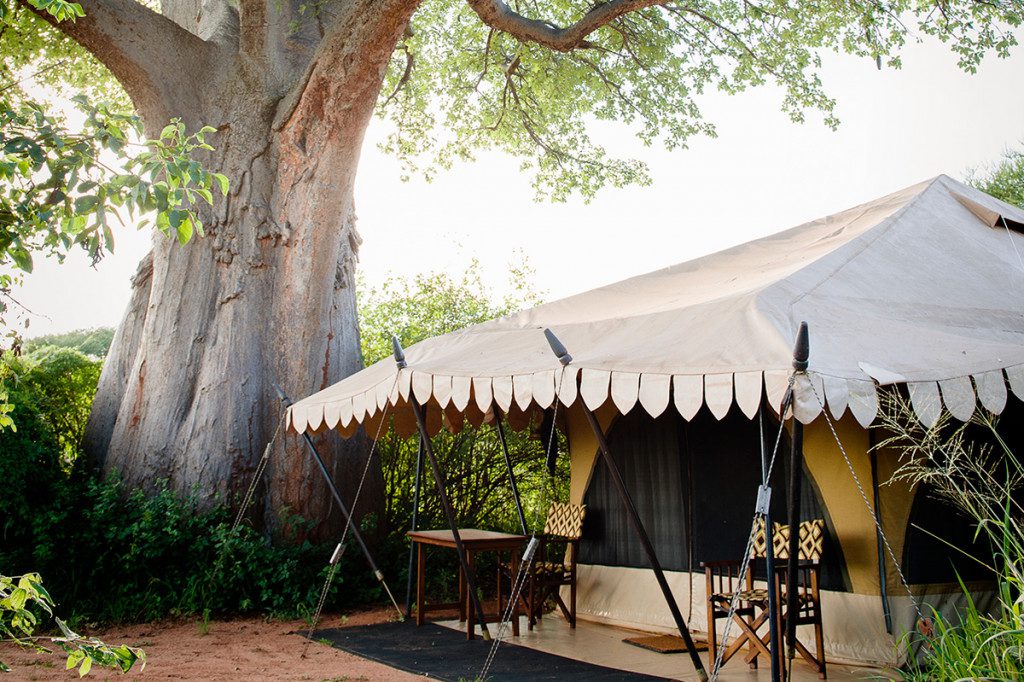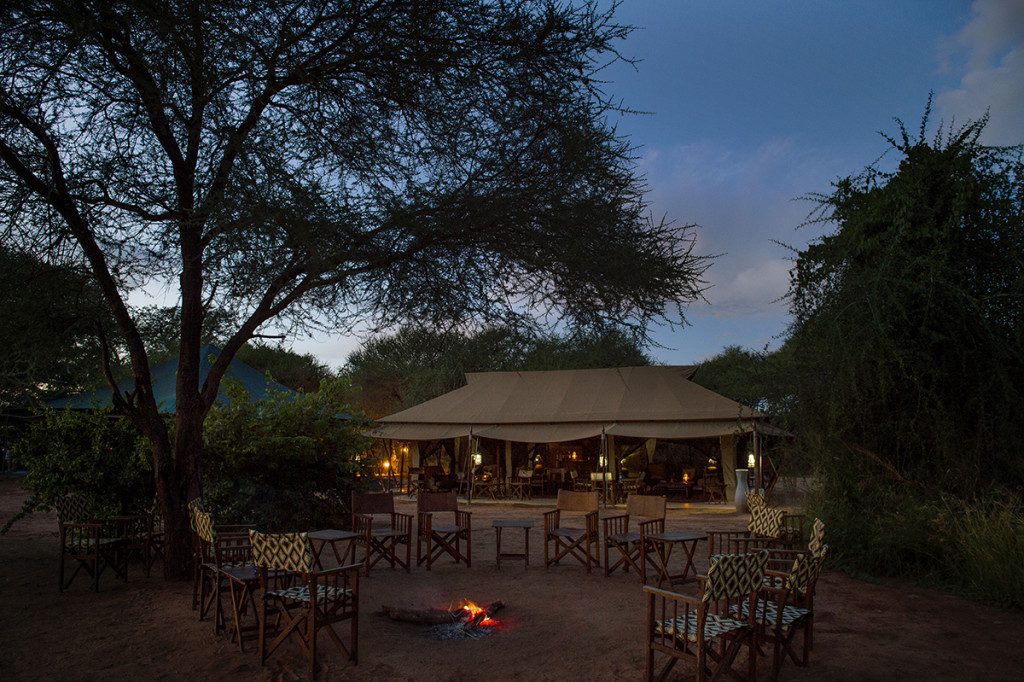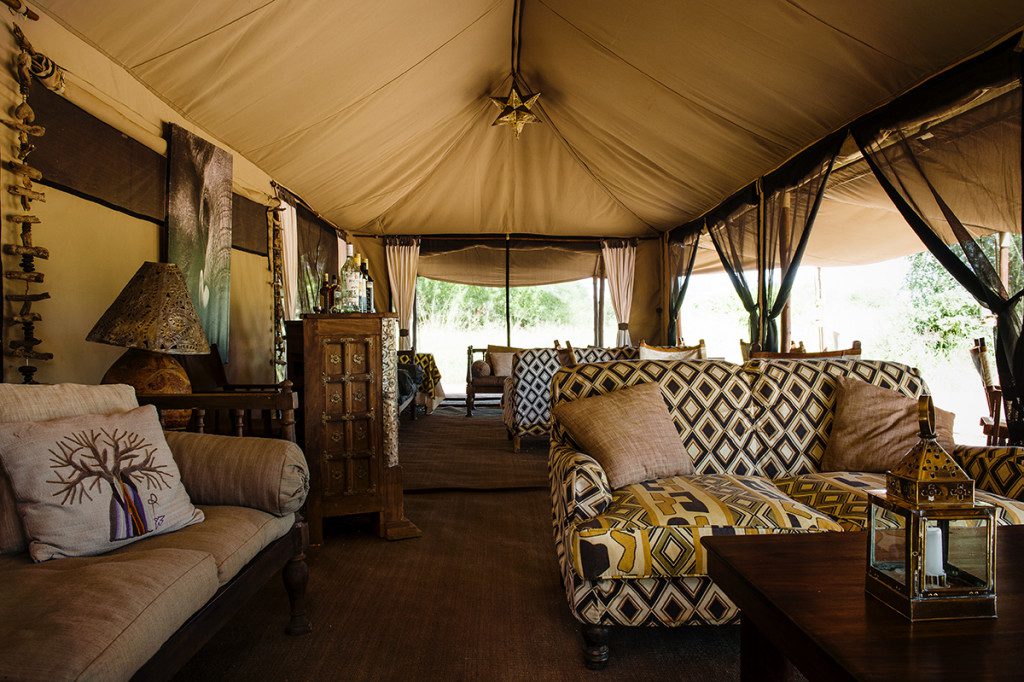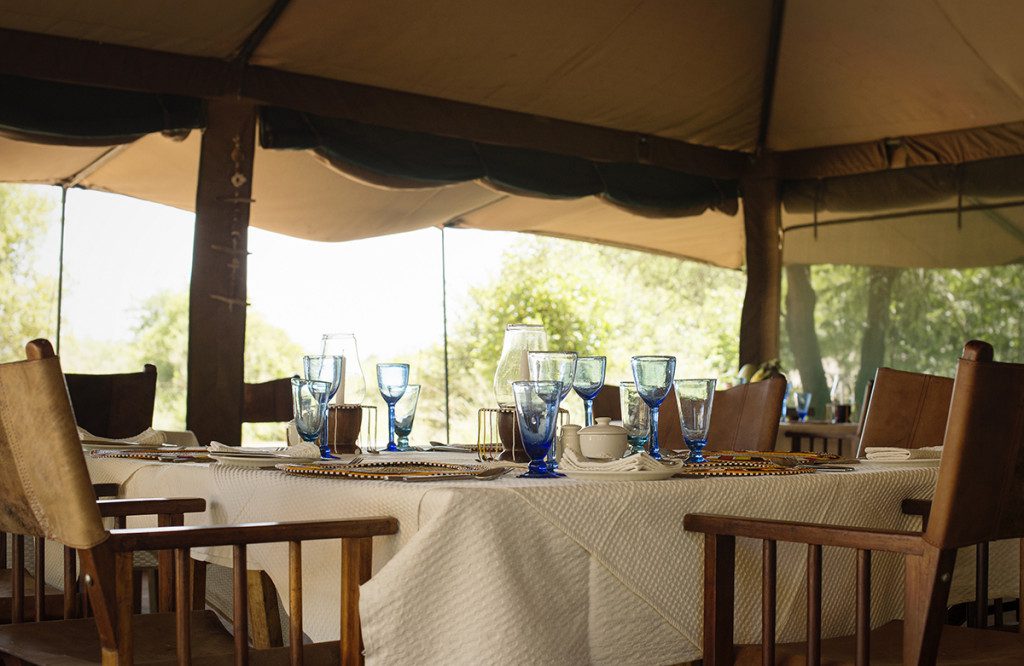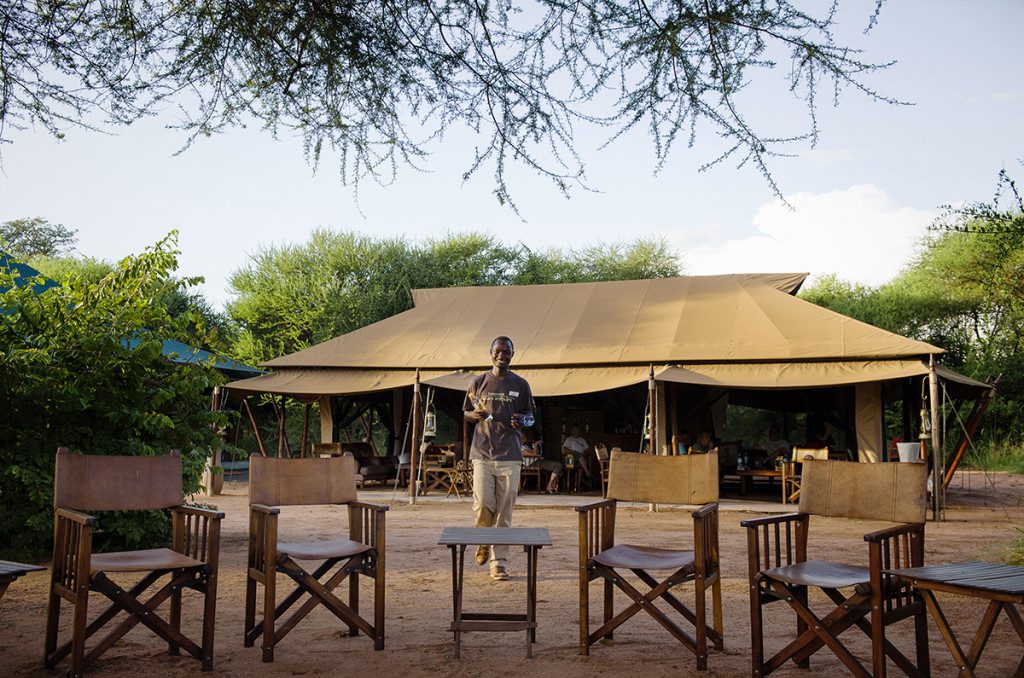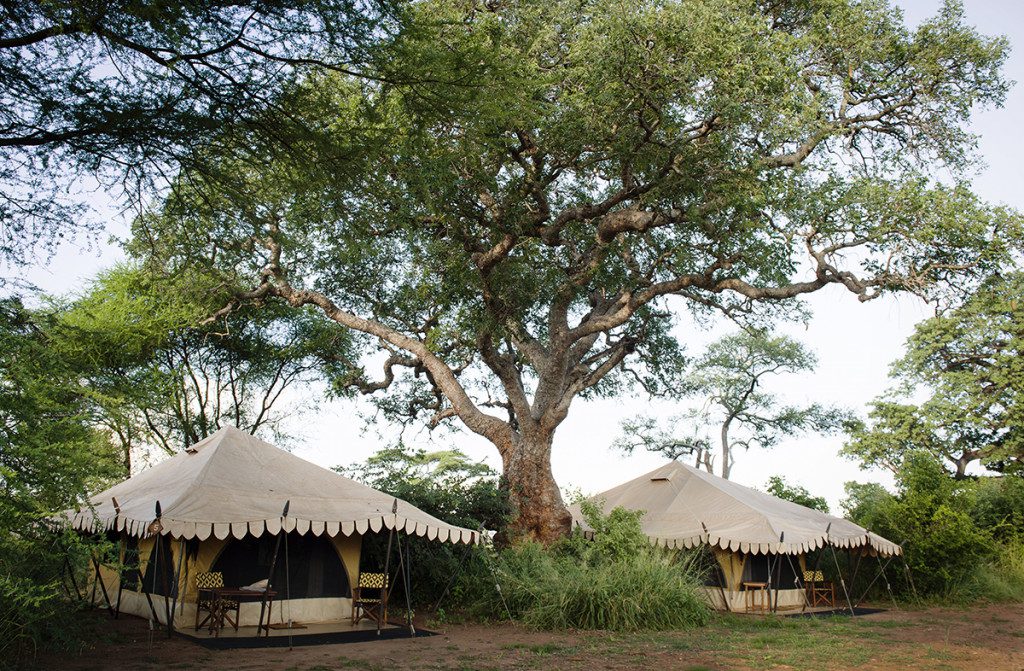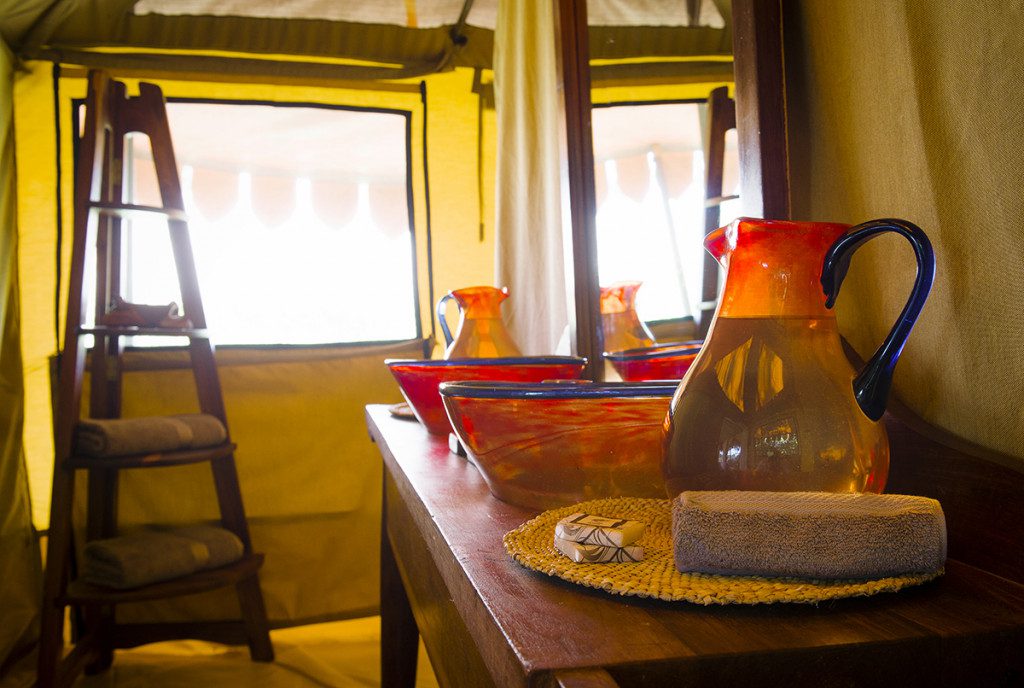THE "LITTLE SERENGETI"
Chopping Tarangire National Park in two is the Tarangire River, the lifeblood of these 1,100 square miles of swamps, grasslands and thick acacia bush. Thousands of elephants roam this lush region of the Rift Valley–one of the highest concentrations in the world–as do plenty of giraffes, impalas, warthogs, zebras, wildebeest and others. Big cats make appearances too, often basking in the sunlight on the riverbanks. The park is affectionately called the “Little Serengeti” due to its similar landscape and wildlife composition–though Tarangire offers something the Serengeti doesn’t.
The idyllic green season is a birder’s dream. Over 450 bird species, including many rare ones, can be spotted in the marshy center of the park, and vast flocks of waterfowl abound: saddle-billed stork, African fish eagle, tawny eagle, lilac-breasted roller and so on. Both migrant and resident birds come out in impressive numbers.
During the dry season from July to October, the rains recede, the southern swamplands dry out and water becomes scarce. Throngs of animals migrate to the park in search of dwindling water resources, and most find their way to the Tarangire River. This density of animals creates exciting standoffs and prime wildlife viewing opportunities.
.
Where you'll stay
Tarangire nyumba camp
Your camp is set amongst an array of baobab trees near the Tarangire River. Enjoy top-notch service from the camp staff, delicious meals in the dining tent, and comfortable amenities in your tent. Sit back with a cocktail or a book in the lounge tent, by the campfire, or on the verandah of your Nyumba tent.
Experience it on safari
Ready to experience the Tarangire firsthand? Explore our safaris that visit Tarangire National Park.
Ask about adding Tarangire onto the following safari itineraries
Related posts

6 Reasons to Explore Tarangire on Safari
Tanzania’s best-kept secret may just be Tarangire National Park, a sprawling wildlife hotspot bestrewn with elephants, baobabs, big cats and green acacia wilds.

Why the Baobab is Tanzania’s “Tree of Life”
Boasting over 300 applications by humans and wildlife, no other tree in the world does as much to sustain life as the baobab.

Meet Camp Chef Rebeka Maronde
Rebeka is head chef in the Tarangire camp. Her homestyle cooking has guests raving in the dining tent, and even asking for recipes so they can take a taste of Tanzania home with them.

Guest Video: Elephants in Tarangire
Thomson Safaris guest Linda said, “A family of elephants walked right up to us in our Land Rovers; we were all perfectly silent as they approached. They came so close, I could have touched them! Just extraordinary.”

What’s the Difference between African and Asian Elephants?
At first it might be hard to see the difference between African and Asian elephants; how much does their zip code really matter at the end of the day?

